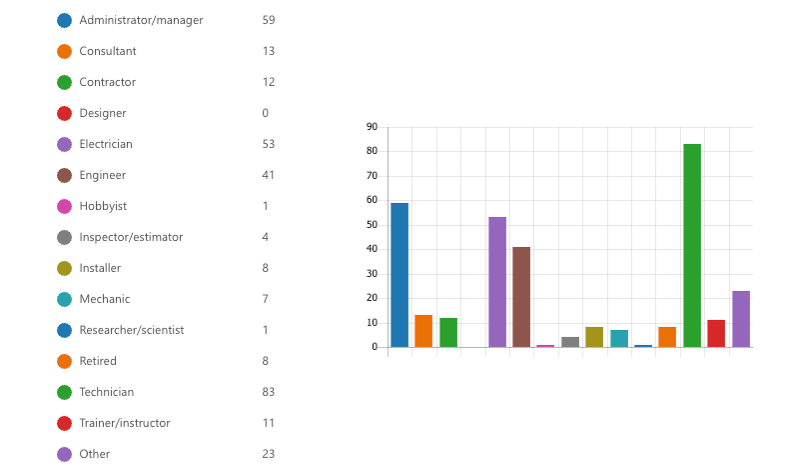The annual Fluke Safety Survey seeks to identify trends in sentiment on a variety of workplace safety-related topics. The survey is in its fourth year and trends on select questions are included in this report.
Only 29% of workers believe most companies provide adequate electrical safety training
In the 2023 survey, 29% of workers responded either strongly agree or agree that more training, or a different kind of training is needed at most companies.
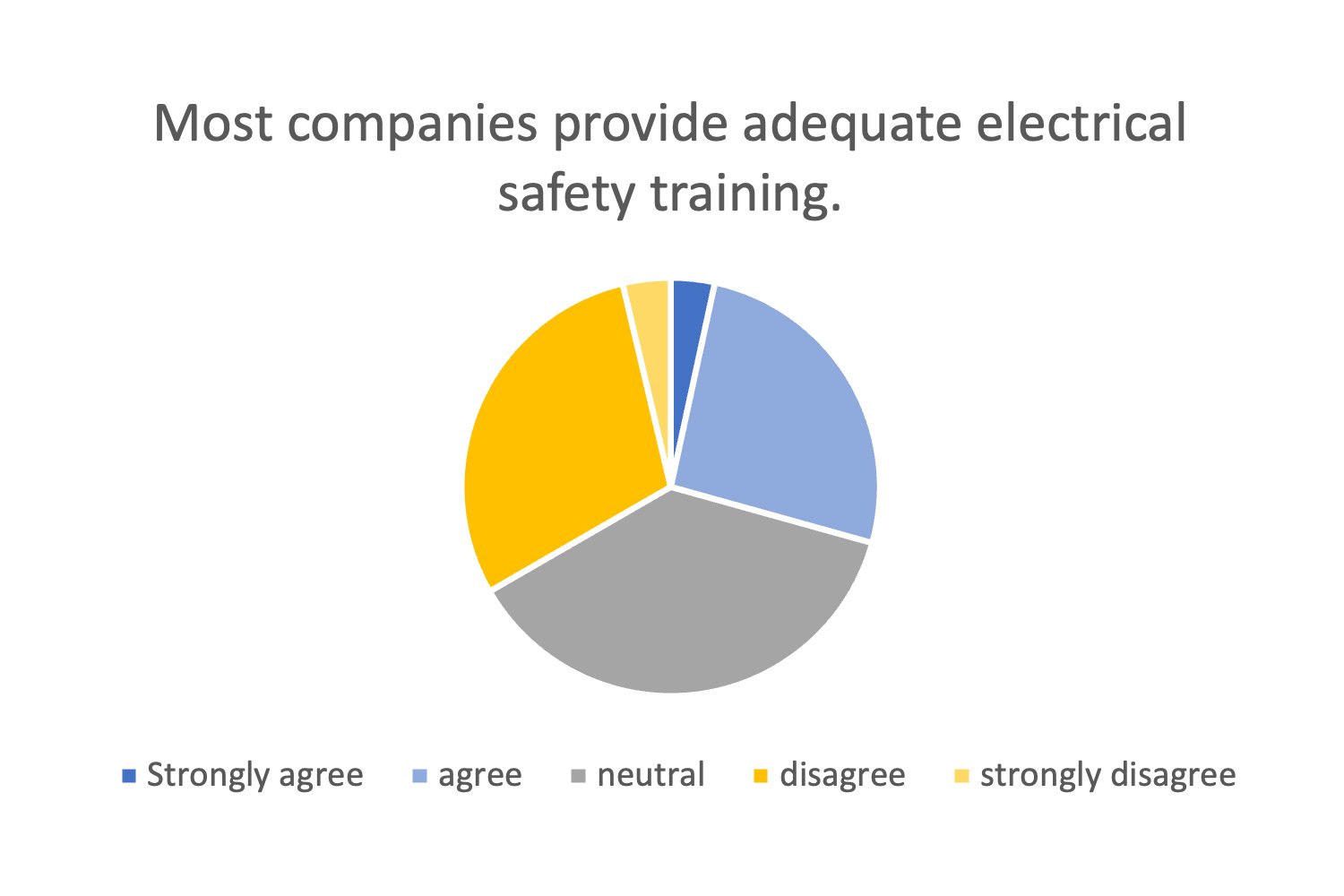
Over the four years of data collection, more than 30% of workers have never responded positively to this question. Workers in 2023 and 2022 responded the most positively to this question, 29.3% agreed or strongly agreed that most companies provide adequate electrical safety training.
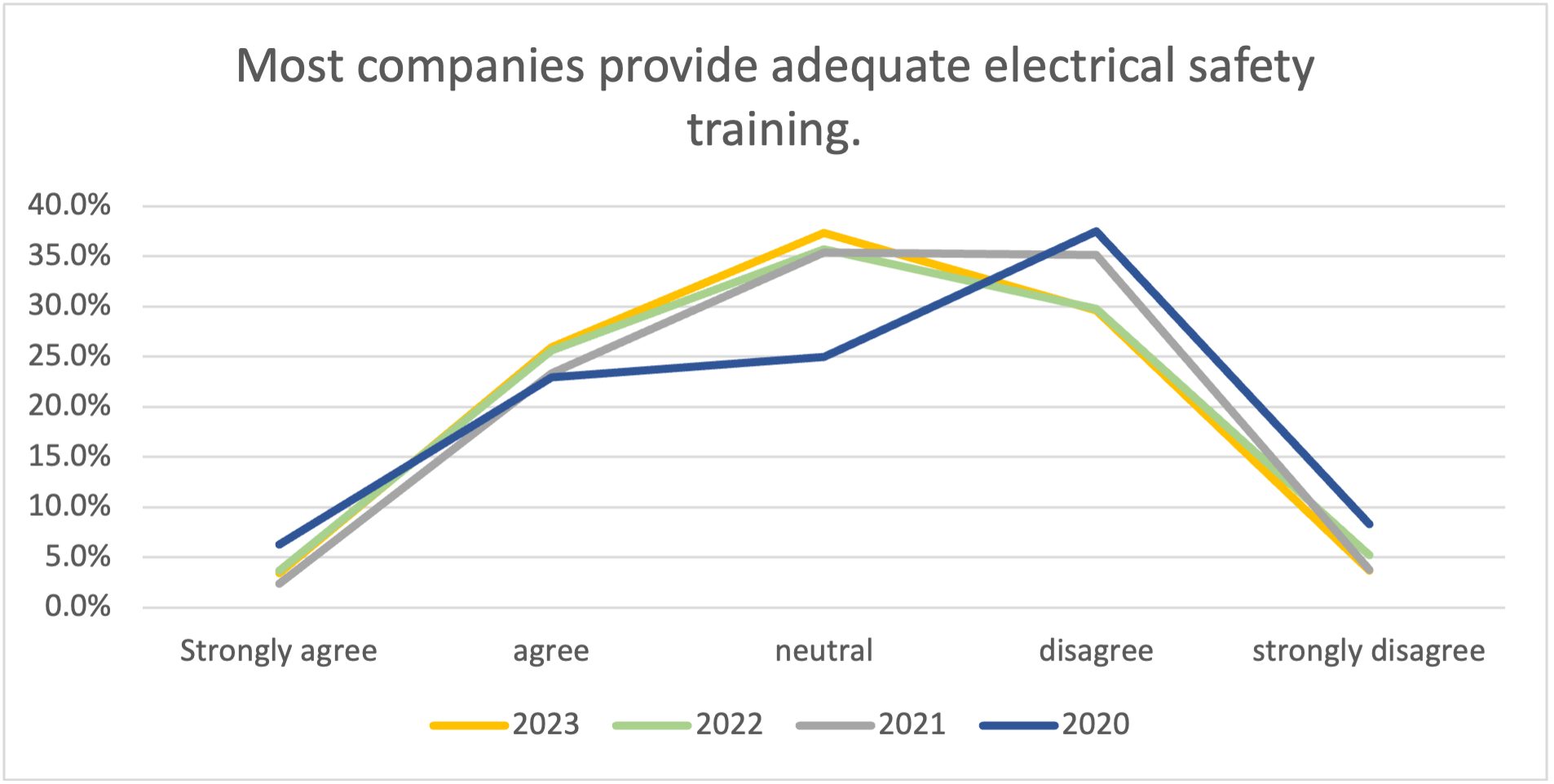
89.5% of workers see an opportunity to improve electrical safety in the workplace
The answers to the previous question fall right in line with respondents’ sentiments toward opportunities to improve electrical safety in the workplace. 89.5% answered strongly agree or agree, 10.5% were neutral, and less than 1% disagreed.
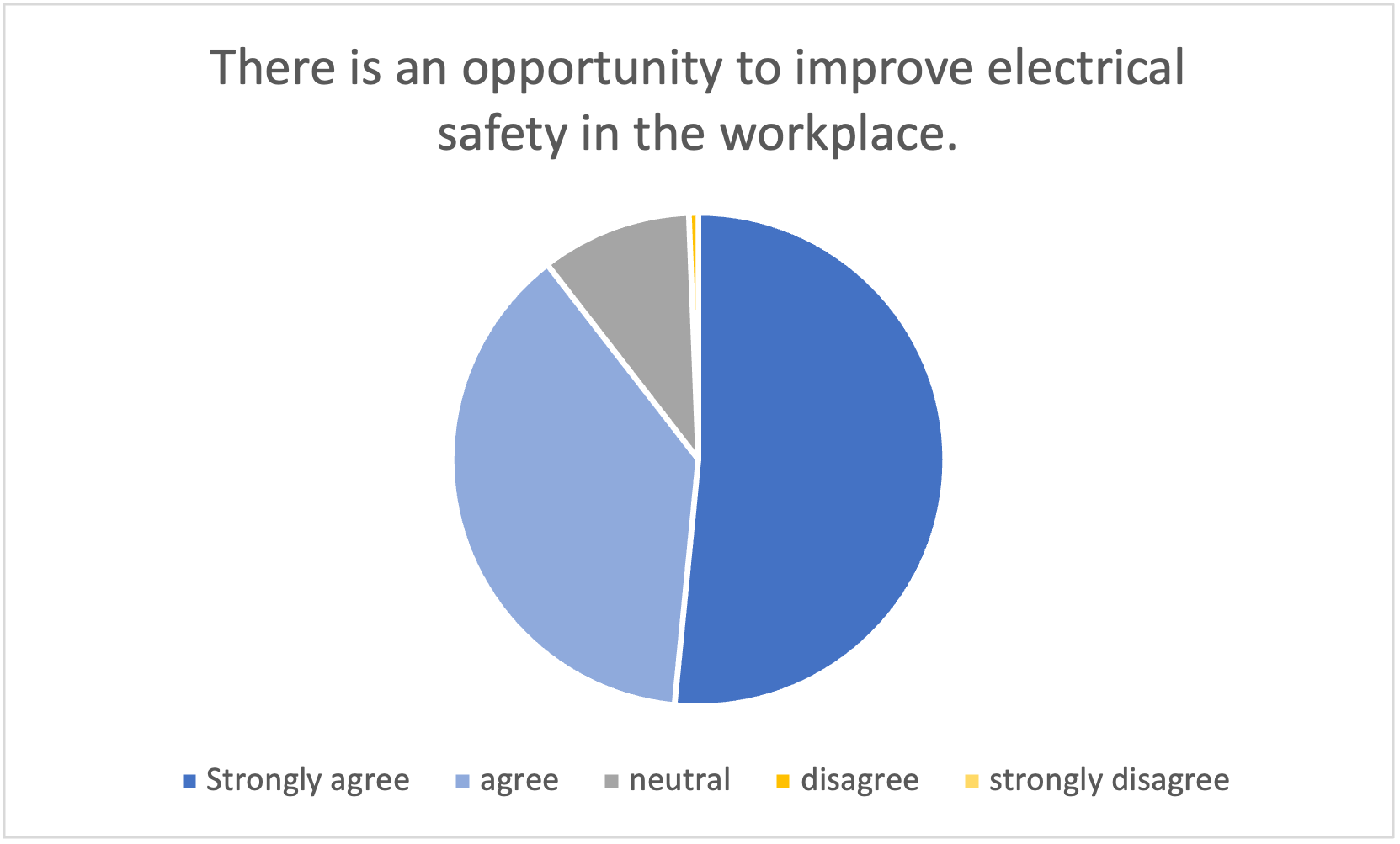
As one individual from Australia put it, “Safety requirements and compliance are a lot better than they used to be, but it is still something we need to focus on to ensure improvements continue and younger tradesman embrace it.”
56% of workers have ideas on how to make the industry safer
However, a higher percentage of respondents have ideas for how to make the industry safer.
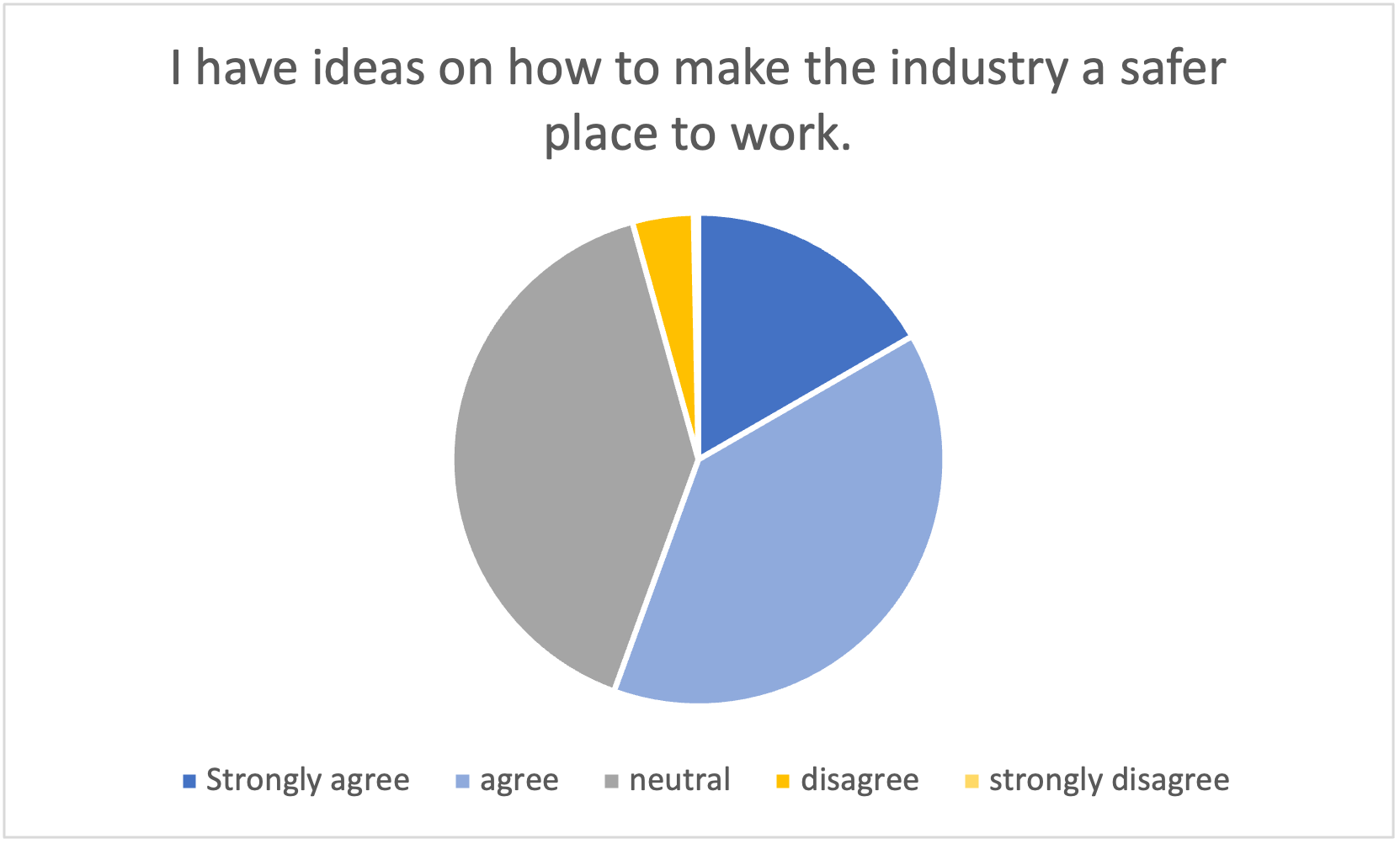
Just over half (55.6%) of respondents agreed that they had ideas on how to make the industry a safer place to work. And nearly half of those who participated in the survey (41%) responded with specific ideas and feedback on how to improve workplace safety. Their thoughts and ideas are included throughout this report.
Everyone has a role in workplace safety
As we’ve seen in previous years, the most responsible person is workers/myself. 79% of survey takers responded with workers/myself as who is most responsible for workplace safety. As one individual put it, “Safety begins with me. I am responsible to make sure that what I am doing is safe. Having the correct tools, clothing, and area to work is up to me to use them.” –65-74-year-old from Florida.
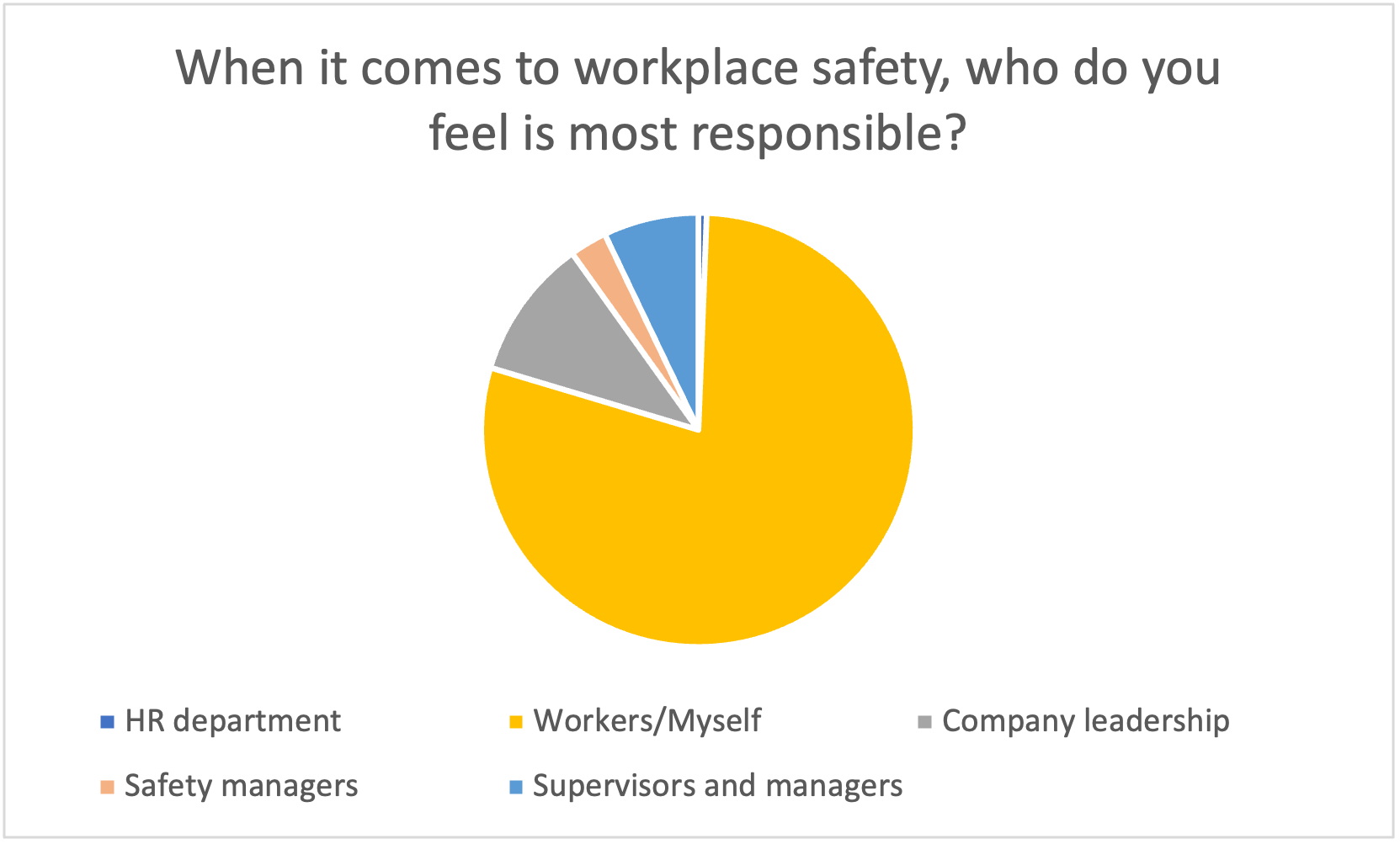
However, multiple individuals also pointed out that safety, and the culture that goes along with it, is more than an individual job. As one 55–64-year-old worker from Missouri put it, “it's everyone's job to keep each other safe. If another employee is being unsafe, call them out on it. I fully expect all employees to watch out for each other and keep each other safe.” A 55–64-year-old from Maryland added, “everyone present at a worksite is responsible for workplace safety.”
A 45–54-year-old from California offered some additional clarification, “I feel everyone in the chain bears responsibility for workplace safety. The essential component in my opinion is communication and implementation. Management needs to be made aware of issues and should be required to act responsibly to address these issues as they arise.”
“There is always a need to watch each other’s backs when it comes to safety of fellow workmates. Point of fact, one can never be safe enough.” –45-54-year-old from Zimbabwe.
Over our four years of results you can see a trend in respondents seeing themselves as more responsible for safety than someone else. Each year, the percent of people who believe someone else is responsible for their safety has declined, 2023 shows the smallest amount yet.

Trust in company safety culture is increasing
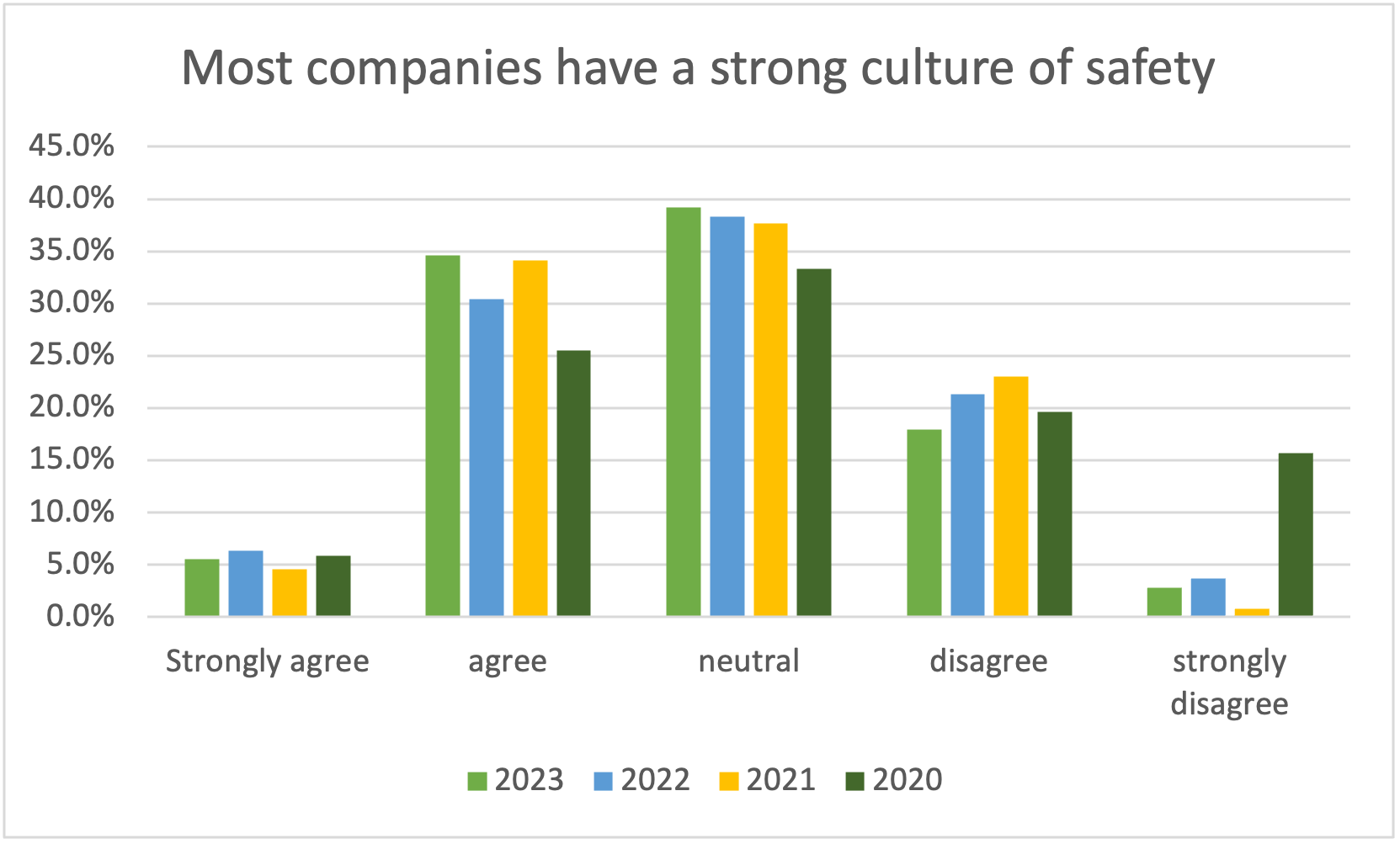
After seeing a shift toward the negative response to this question for the previous 3 years, in 2023, workers voted with more trust in the culture of safety they’re seeing within most companies. Respondents with a positive view (responding strongly agree or agree) rose by nearly 4% from the previous years’ data. While negative responses (strongly disagree or disagree) saw a decline by nearly 5% from 2022 to 2023. This positive swing lines up with the sentiments toward needing a culture of safety in the workplace.
Nearly everyone surveyed, 99.4% agree that a strong culture of safety in the workplace is important in keeping workers safe. “The culture of safety needs to start from the very top and be applied in every layer of the ‘command structure.’ Fine words and spreadsheets do nothing if the actions in the field are not monitored, and safety is not culturally enforced in any way.” –18–24-year-old from Finland.
“Workplace safety must be a built-in aspect of all activity.” –65–74-year-old form Connecticut.
73% believe electricians sometimes skip using the proper PPE because it’s inconvenient

A strong majority of respondents, year over year, agree that electricians skip using the right personal protective equipment (PPE) because it is inconvenient. Interestingly, 81% of the 236 positive responses (strongly agree/agree) also said “workers/yourself” was the most responsible for workplace safety.
A 35–54-year-old engineer from Idaho offers some insight into why a worker may skip using PPE, “the equipment and/or tools cannot be significantly cumbersome, or they will not use it either. From my experience gloves are the most unused PPE because they hinder work.”
A worker from Florida points out that pressure to work quickly may also be why some safety steps, like PPE, are skipped, “We have to stop putting pressure on down time to allow for proper safety to happen.”
“PPE is essential, but is only affective if people are trained on how to properly use it and in a company culture where using PPE is encouraged, expected, and accepted is established.” –35-44 year-old from Utah.
A 55–64-year-old engineer from Ohio offered some in-depth suggestions on creating and building safety policy that workers want to follow.
- “Ensure direct supervisors enforce the safety culture under a ‘no pressure’ policy. Contracts have deadlines and penalties which supervisors are afraid to encroach upon so safety often goes unenforced for the sake of production.”
- “Workers will not buy into to any safety program where the hypocrisy is fully visible: leave the safety meeting and the supervisors doesn't stop the work due to a hazard and take time to correct it, but instead says ‘just hurry up and don't get hurt!’”
- “Safety has to be enforced from the standpoint of education, not punishment. Workers will not cooperate with a program that will punish them for reporting near misses or minor incidents and they will not believe a safety person who demonstrates that writing up violations is how they prove their relevance to the job.”
- “Safety has to be performed for safety's sake. It has to be done to educate and create better habits, not to punish. That doesn't exclude punishing those who are willingly or habitually negligent, but it priorities rewards for good safety habits rather than punishing bad ones.”
67% of electricians use test tools accurately rated for their work environment
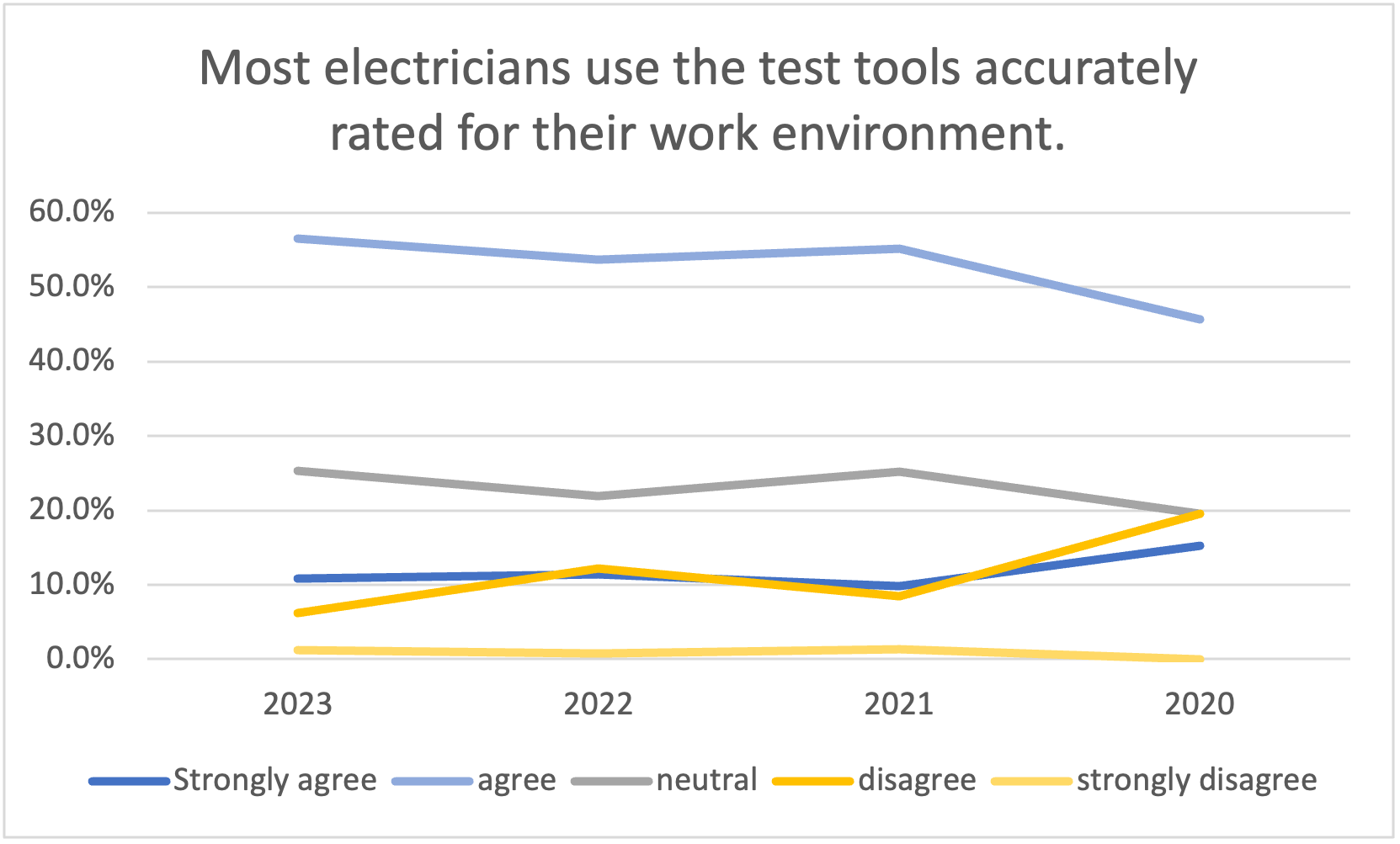
Survey sentiment around most electricians using test tools accurately rated for their work environment has continued to trend toward the positive with 67% responding strongly agree or agree, that most electricians do use test tools accurately rated for their environment. However, the past three years shown that there are opportunities for improvement. Changes to ensure properly rated tools are available, and each individual is trained on how to select the proper tool for the environment they will work in.
80% believe innovative technologies are keeping them safer
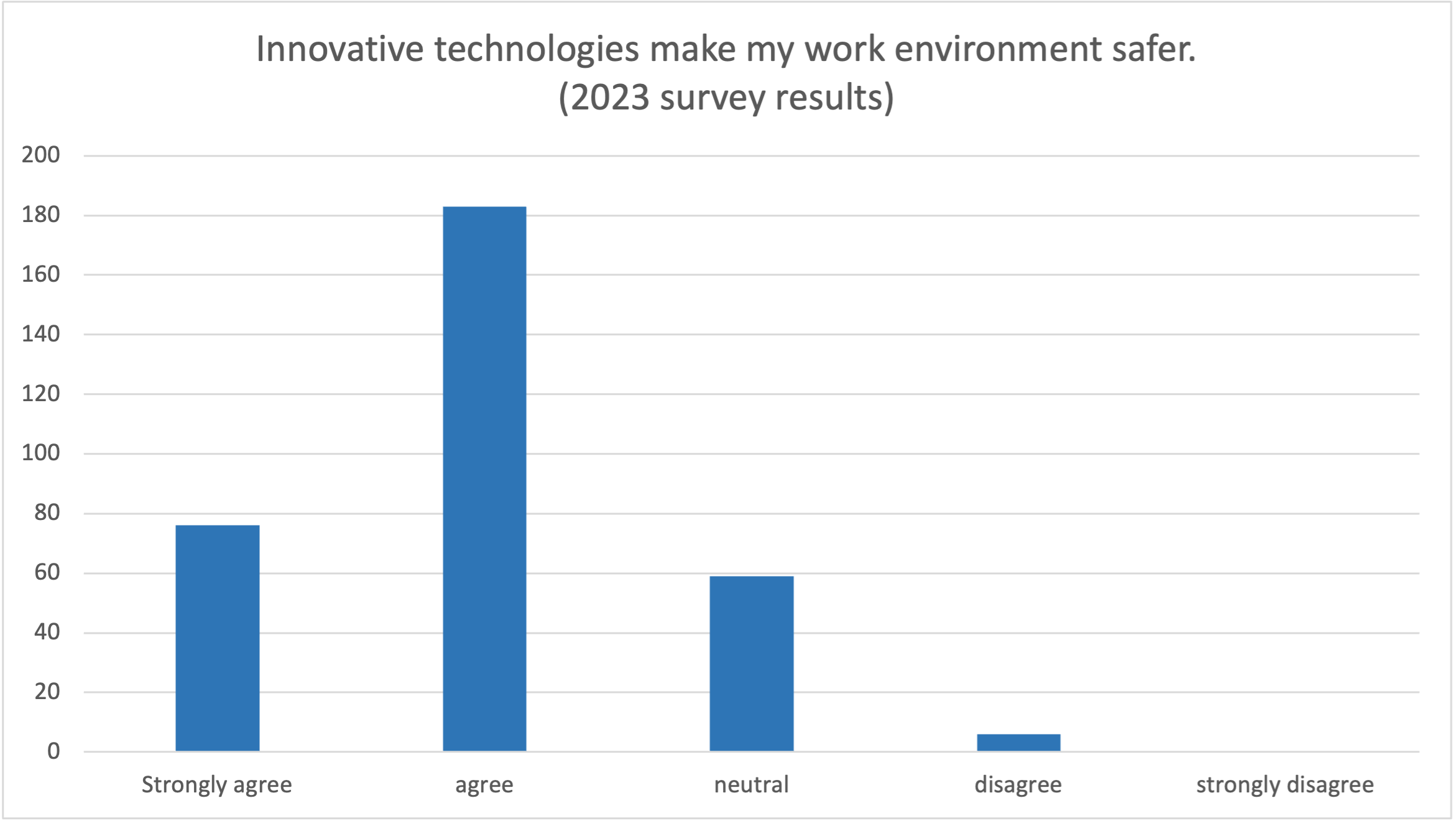
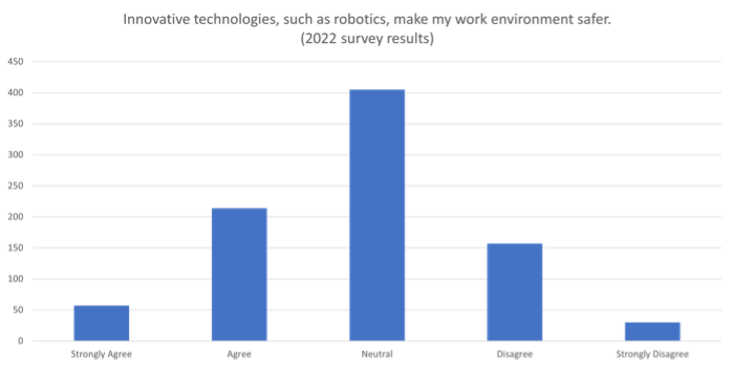
In the second year this survey question has been asked, the sentiment toward innovative technologies keeping works safe has significantly shifted toward the positive. In last years’ responses, the majority of respondents were unsure or neutral on the idea that innovative technologies making their work environment safer. This year, 80% responded either strongly agree or agree to this question.
78% of workers say they rely on tool technology to keep them safe

Increasing from last year, from 72.3% in 2022 to 78.1% in 2023 strongly agree or agree they rely on the technology in their tools and other equipment to keep them safe at work.
An electrician from Kenya relies on their tools to keep them save, “Having the right and innovative tools and devices is key when it comes to safety. If it is possible to eliminate the manual measurement and monitoring processes then safety would be enhanced.”
69% of workers stay up to date on electrical safety standards
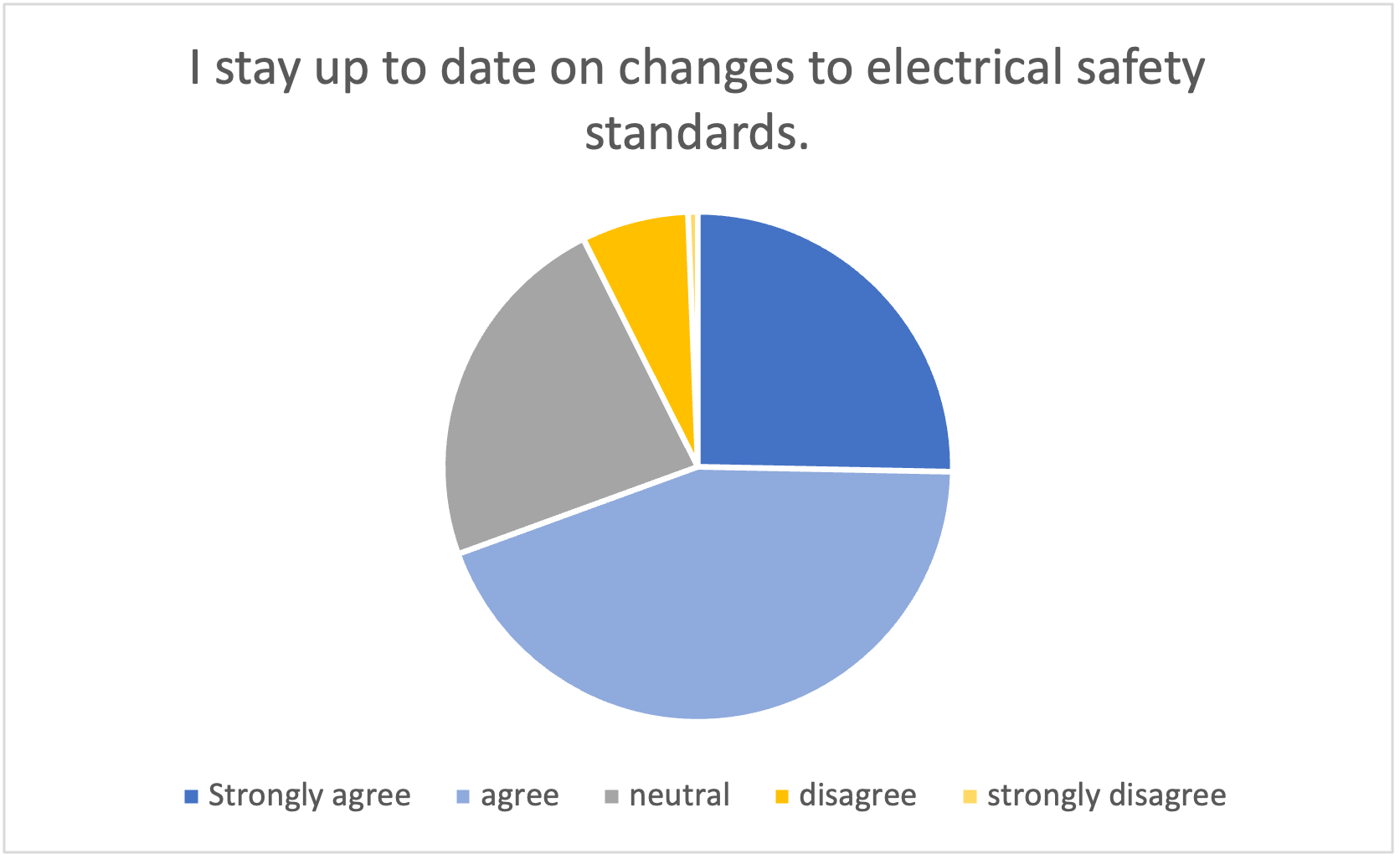
The majority of respondents still say they stay up to date on electrical safety standards, this 69% of responded strongly agreed or agreed to this question. This response is down slightly from 71.8% saying they stayed up to date in 2022.
68% participate in regular safety trainings or classes
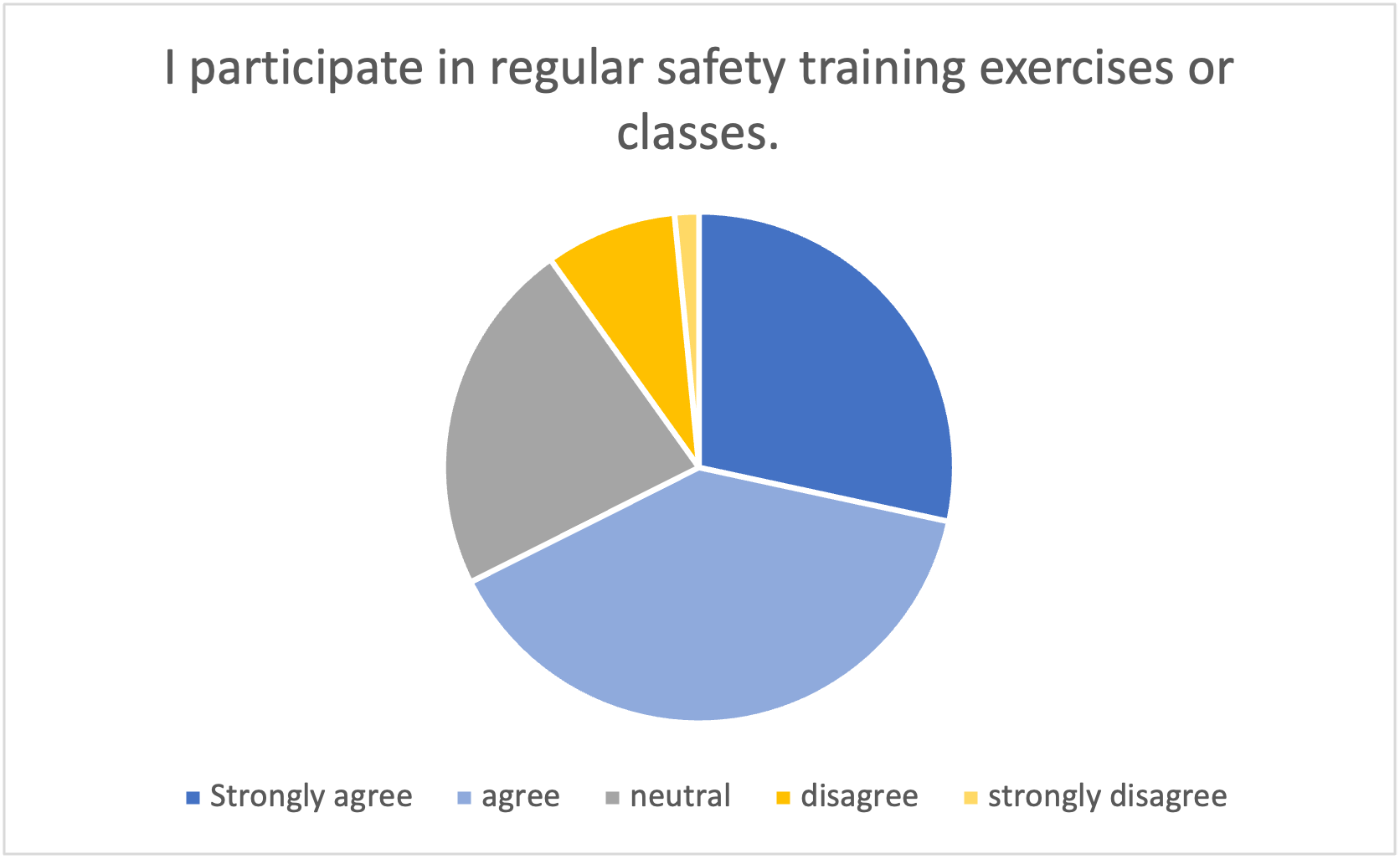
Remaining nearly the same from 2022, the majority of responded strongly agree or agree that they participate in safety training exercises or classes.
| 2023 | 2022 | |
| Strongly agree/agree | 67.6% | 68.1 |
An electrician from North Carolina points out, “Most new technology is useless without proper education and training. Also, cost have rising dramatically due to safety practices. I feel that education and training should be top priority. You and I are the first line of defense.”
An electrician in the Philippines wraps up the ideas around this survey nicely, “Safety is paramount, everywhere and every time.
We can improve it by:
- Doing risk analysis before and after a job
- Proper use of the right tools
- Wearing the right PPE
- Knowledge-sharing and skill-development through training and seminars
- A good safety culture.”
About the 2023 survey
Dates of survey: March 11-28, 2023
Total completed responses: 324
Regions represented:
- Africa
- Asia
- Australia
- Europe
- Latin America and the Caribbean
- Middle East and North Africa
- United States of America
- All 50 states plus District of Columbia
- Puerto Rico
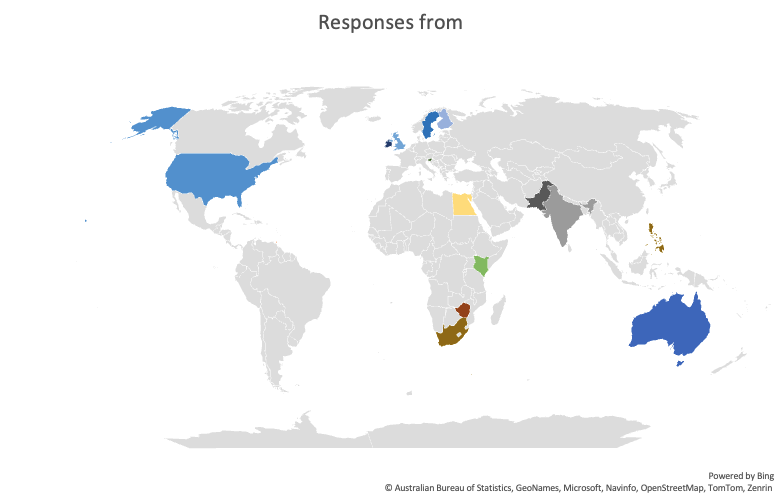
Age ranges represented: 18 to over 74
Top industries represented
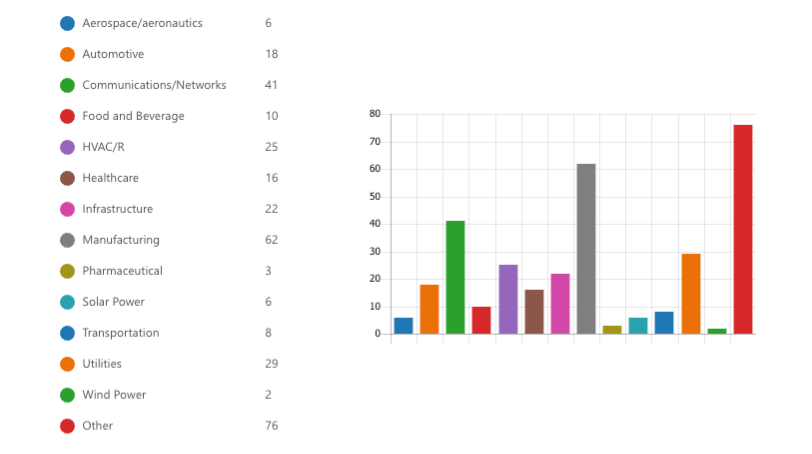
Top job types represented
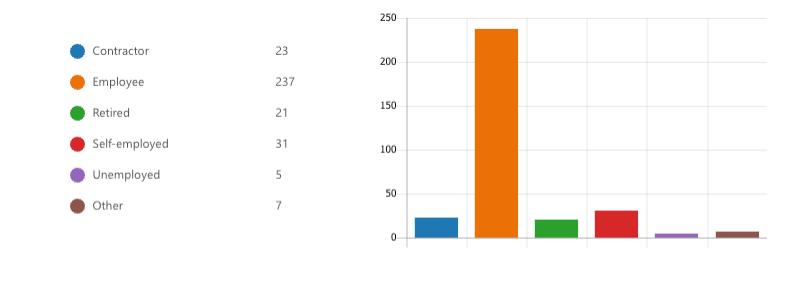
Respondents by employment status
